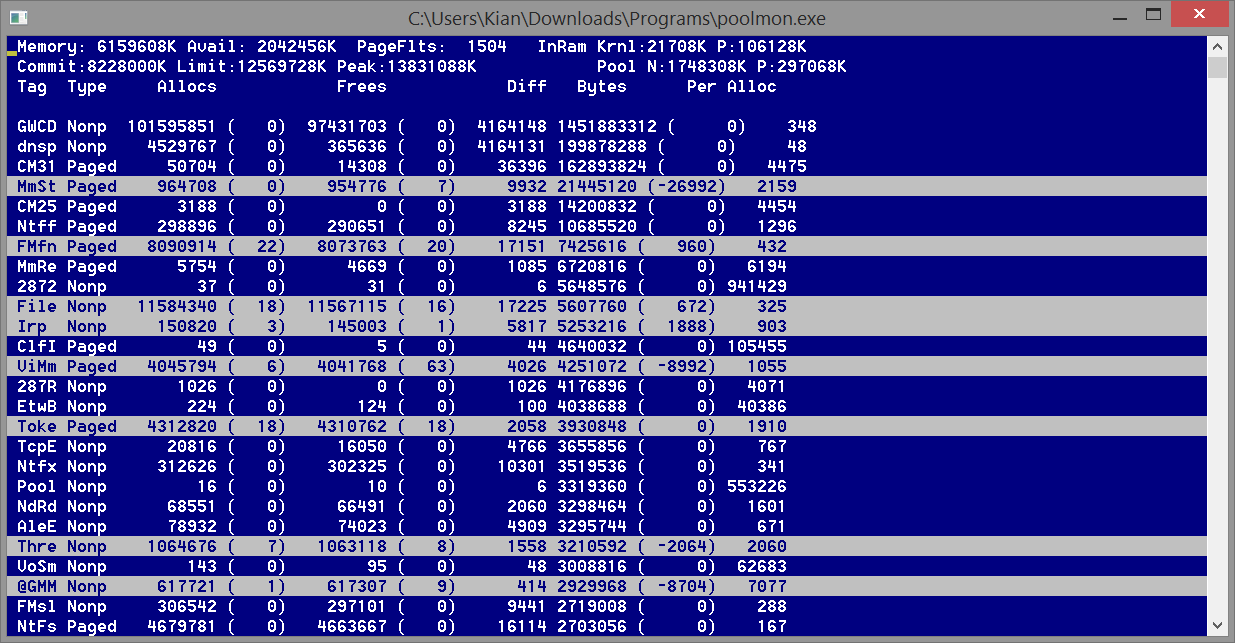

We have seen about 2 different instances of poolmon.exe in different location. PoolMon monitors the bytes in the paged and Looking for ingredients for Refer to the below mentioned link to download Windows. This feature uses data from pooltag.txt, a file installed with PoolMon and with the Debugging Tools for Windows packages. poolmon.exe is known as Microsoft Windows Operating System and it is.

Stop PoolMon, wait for a 30 minutes, and then restart PoolMon.
poolmon -b -p -r -nWhere is poolmon.exe located drivers#
PoolMon can display the names of the Windows components and commonly used drivers that assign each pool tag. Starting PoolMon changes the data, therefore you must let it run until it reaches a steady state and the data is reliable. For more information, see "Pool Tagging Requirement" in PoolMon Requirements. The data is grouped by pool allocation tag. On Windows Server 2003 and later versions of Windows, pool tagging is permanently enabled. Memory Pool Monitor (PoolMon) Memory Pool Monitor (Poolmon.exe) displays data that the operating system collects about memory allocations from the systems paged and nonpaged memory pools and from the memory pools used for Terminal Services sessions. To use PoolMon on Microsoft Windows XP and earlier systems, you must enable pool tagging.
Where is poolmon.exe located driver#
The version of PoolMon described in this document is included in the \Tools\Other subdirectory of the Windows Driver Kit (WDK). You can also use PoolMon in each stage of testing to view the driver's patterns of allocation and free operations, and to reveal how much pool memory the driver is using at any given time.

The data is grouped by pool allocation tag.ĭriver developers and testers often use PoolMon to detect memory leaks when they create a new driver, change the driver code, or stress the driver. PoolMon (poolmon.exe), the Memory Pool Monitor, displays data that the operating system collects about memory allocations from the system paged and nonpaged kernel pools, and the memory pools used for Terminal Services sessions.


 0 kommentar(er)
0 kommentar(er)
